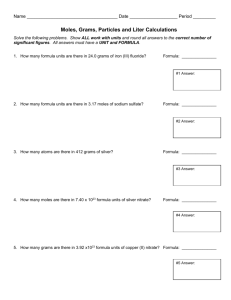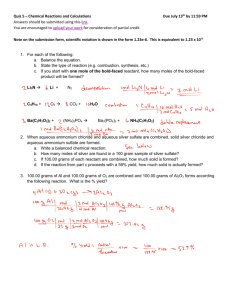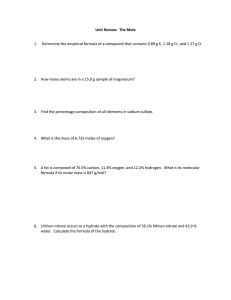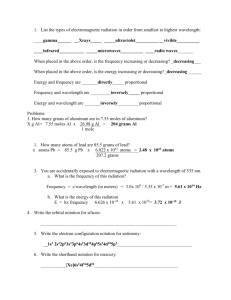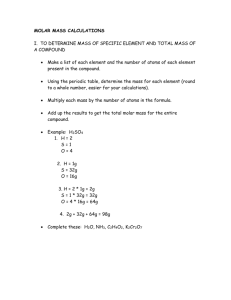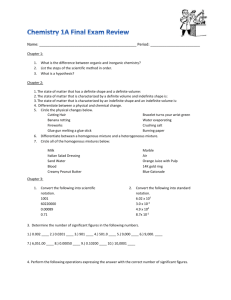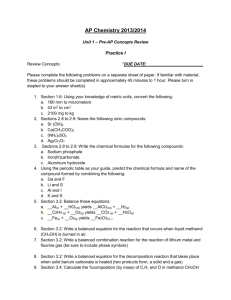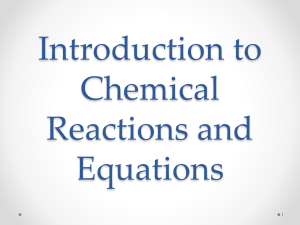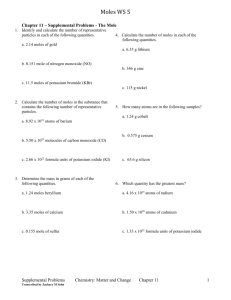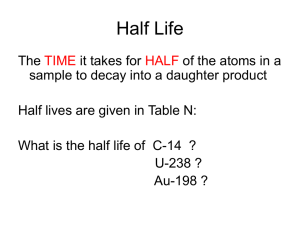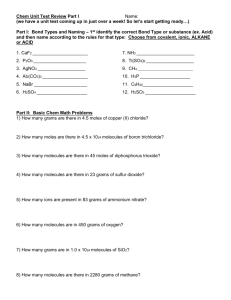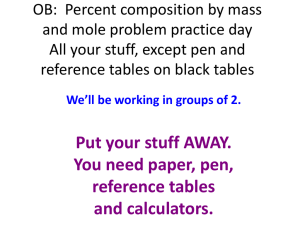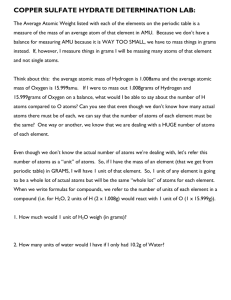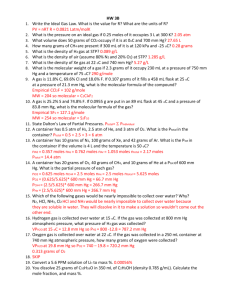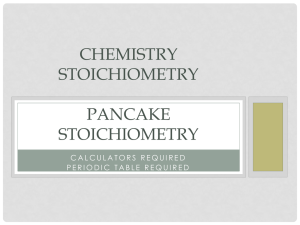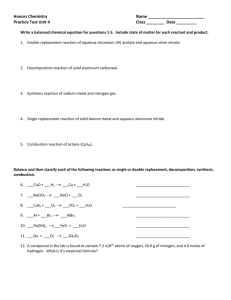Review sheet 1
advertisement
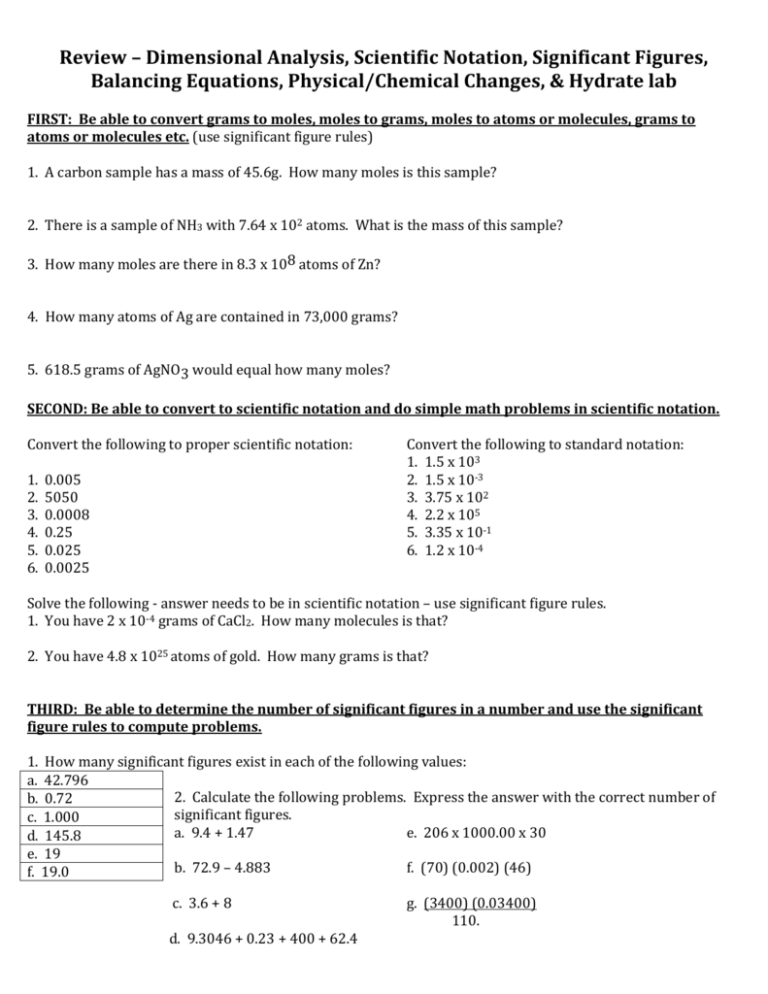
Review – Dimensional Analysis, Scientific Notation, Significant Figures, Balancing Equations, Physical/Chemical Changes, & Hydrate lab FIRST: Be able to convert grams to moles, moles to grams, moles to atoms or molecules, grams to atoms or molecules etc. (use significant figure rules) 1. A carbon sample has a mass of 45.6g. How many moles is this sample? 2. There is a sample of NH3 with 7.64 x 102 atoms. What is the mass of this sample? 3. How many moles are there in 8.3 x 108 atoms of Zn? 4. How many atoms of Ag are contained in 73,000 grams? 5. 618.5 grams of AgNO3 would equal how many moles? SECOND: Be able to convert to scientific notation and do simple math problems in scientific notation. Convert the following to proper scientific notation: 1. 2. 3. 4. 5. 6. 0.005 5050 0.0008 0.25 0.025 0.0025 Convert the following to standard notation: 1. 1.5 x 103 2. 1.5 x 10-3 3. 3.75 x 102 4. 2.2 x 105 5. 3.35 x 10-1 6. 1.2 x 10-4 Solve the following - answer needs to be in scientific notation – use significant figure rules. 1. You have 2 x 10-4 grams of CaCl2. How many molecules is that? 2. You have 4.8 x 1025 atoms of gold. How many grams is that? THIRD: Be able to determine the number of significant figures in a number and use the significant figure rules to compute problems. 1. How many significant figures exist in each of the following values: a. 42.796 2. Calculate the following problems. Express the answer with the correct number of b. 0.72 significant figures. c. 1.000 a. 9.4 + 1.47 e. 206 x 1000.00 x 30 d. 145.8 e. 19 b. 72.9 – 4.883 f. (70) (0.002) (46) f. 19.0 c. 3.6 + 8 d. 9.3046 + 0.23 + 400 + 62.4 g. (3400) (0.03400) 110. FOURTH: Be able to distinguish a chemical change from a Physical Change: 1. What are examples of physical properties? 2. What are examples of chemical properties? 3. What is a physical change? 4. What is a chemical change? 5. Examine the chemical equation. Does this equation describe a chemical or physical change? Explain your reasoning. C17H17ON3(s) + 2C4H6O3(l) → C21H21O5N(s) + 2C2H4O2(l) FIFTH: Chemical Equations: Be able to write and balance. Remember HONCl BrIF P4S8 Write the following reactions with state of matter symbols, balance then give type of reaction! 1. Solid aluminum + aqueous hydrogen chloride yield aqueous aluminum chloride + hydrogen gas 2. calcium hydroxide + phosphoric acid (hydrogen phosphate) yield calcium phosphate + water 3. C4H10 and oxygen yield carbon dioxide and water. 4. Ammonium nitrate solution is a fertilizer that can react explosively to form nitrogen gas, water and oxygen gas. 5. A solution of ammonium iodide reacts with aqueous lead(II) nitrate forming aqueous ammonium nitrate and solid lead(II) iodide. 6. Nitrogen gas and oxygen gas react to form gaseous dinitrogen pentoxide (N2O5). SIXTH: Be able to use hydrate lab results to find the ratio of ionic compound to water. Bernie Beaker weighs an empty beaker and finds it to have a mass of 95.83 g. After putting a spoonful of Ca(OH)2 hydrate into the beaker, he finds that the mass has increased slightly to 99.87 g. He heats the beaker and its contents twice, and finds that the mass has dropped to 97.22 grams. Calculate the ratio of water to Calcium hydroxide.
